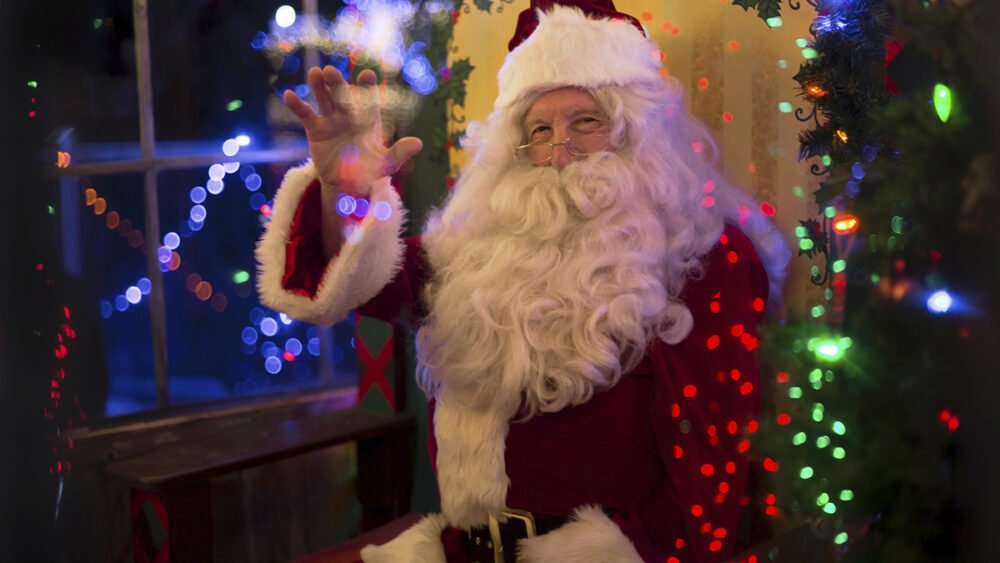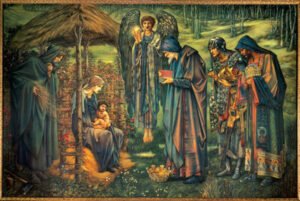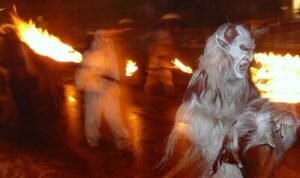The Three Wise Men and other international Christmas traditions

The entertainment business always portrays the more widely known part of Christmas, with Santa Claus in the lead. His legend goes back in time hundreds of years, beginning with a monk who shared his wealth in what we know now as Turkey. This evolved to the red and white dressed man who enters your house through the chimney, leaving presents under the Christmas tree.
Today, it is practically impossible to not know who he is and what his story involves. But he is not the only one going around giving presents. Even though this tradition is becoming recognised more and more in countries where it was not part of the popular culture, there are still many other characters that make their appearance at Christmas time.
In Spain, for instance, the Three Wise Men arrive every year to bring presents for everyone. Their legend begins in the Bible, coming from the East to give presents to the newborn Jesus.

- Ireland’s Influence on Christmas Traditions
- 6 Christmas Traditions: Where Did They Originate From – Babylon
The Three Wise Men in Spain
On the night of January 5, following the star of Bethlehem, the three of them – Melchior, Caspar, and Balthazar – travelled from the East to find the newborn King of the Jews and show him their devotion. On their arrival, they gave him gifts of gold, frankincense, and myrrh.
From those three presents, the tradition grew in 19th century Spain, when they began to give presents on the day of Epiphany. The custom remained and, today, on the 6th of January children around all of Spain wake up to presents from the Three Wise Men.
It all starts with a letter, a list of the presents each child wants to receive, that they send to their majesties – they are known as the Kings of the Orient in Spain – during the month of December. Their arrival is highly anticipated, and it all ends on the evening of the 5th of January, when parades are held on the streets of every town, and children can see them on floats, usually throwing candies and small presents. The parades are quite an important part of Christmas in Spain, and everyone – no matter whether you are a child or an adult – gathers on the streets to receive the three Kings.
We even have a Christmas Carol dedicated entirely to their arrival:
[wpdevart_youtube caption=”” align=”left”]0MCG8Es8aoc[/wpdevart_youtube]
That night, biscuits and milk are left in every home for their majesties to recover their energy from such a long journey. Some people even leave buckets of water for their camels to drink from – yes, they come riding camels, how else would they get everywhere? Also, each person living there must leave a pair of shoes where they wish to receive their presents; this way, there is no confusion as to where they should put yours!
When night comes to an end, everyone gets up from bed to check if their majesties have remembered to bring their presents. If you were good all year, you will have something for sure, but if your behaviour has not been the best, you may find yourself with a bag of coal!
That morning, it is customary for families to have Roscón de Reyes for breakfast. Roscón de Reyes is an oval cake with a hole in the middle – picture it like a giant donut-shaped cake – which is covered with pearled sugar and candied fruit, and can be left plain or filled with whipped cream or other fillings. The flavour is nothing to be compared to, as among its components it has orange blossom water, a quite rare ingredient.

Eating Roscón de Reyes is also a fun way to start the day because inside of it there are little surprises: if you find the king figurine, you will win and be crowned King; if you find the bean, you will have to pay for the Roscón! It is a whole contest for some families.
Here, you can find more about this Spanish cake, and even give it a try to the recipe, though this one does not include the secret ingredient, orange blossom water, which may be hard to find in some places, and they substitute it with brandy or rum.
Other international Christmas traditions
The Three Wise Men are not exclusive to Spain; this tradition is present in many parts of Central and South America, in countries like Mexico, Peru, or Venezuela. There, it is quite similar to the Spanish tradition, with slight variations depending on where you are.
In Europe, you can also find this celebration beyond Spain: in France and Belgium, they even have a traditional pie for that time, the Galette des Rois, made out of puff pastry filled with a mixture of almond cream and custard. This one also has hidden surprises inside, sometimes a bean or other times a figurine, and the custom is pretty much like in Spain: the one that finds it is King for the day!

The festivity of the Three Wise Men is also present in other European countries like Germany, Poland, or Italy. The latter has its very own tradition: Befana, an old lady who, according to the legend, was asked for help by the Wise Men to find baby Jesus. After refusing to go with them to help, she regretted her decision and left her house carrying sweets. She then stopped in every house she found, looking for the newborn, and leaving her sweets to every child she encountered. Now, she keeps doing that: sweets for those who have been good, and coal to the ones that have misbehaved.
Christkind, an angelical blond-haired child, is the one in charge to hand out the presents for children in some areas of Germany, Austria, Switzerland, Liechtenstein, Czech Republic, and other Eastern European countries. This tradition was started by the Lutherans, and he is a representation of Jesus as a child himself. His visit is sometimes announced with a bell ring so that the children of the house know their presents are already there.
In Russia and some of its neighbouring areas, Ded Moroz, a long and grey-bearded old man who wanders around creating heavy frosts on his way using his Posoh – his magic scepter – arrives in children’s homes, asking them for songs and poems, and giving them presents if they have been well-behaved.

We can also find Krampus, the antithesis of Santa Claus, a half-demon, half-goat being who is there to punish the bad children hitting them with his birch sticks and then taking them to the depths of hell on the night of December 5th. He goes around, chasing and scaring people on his path, so watch out!
In some places, Santa coexists with one or more of these legendary beings, as popular culture is now more widespread around the globe. Still, the old practices endure, as they are culturally bound to the places of their provenance. Taking a look at them, we can see how, even though they may have been originated from very different legends, they all share common elements; most of them revolving around spending time with family, and especially having moral guidances, such as the contrast between good and bad, enhancing a good behaviour and teaching children to be kind.